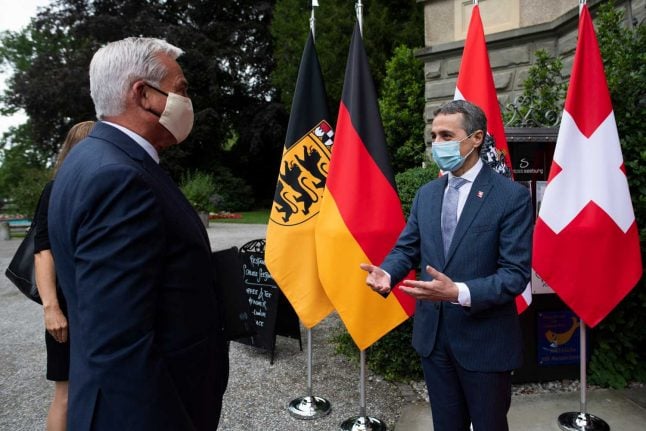Switzerland on Friday expanded its list of ‘high risk’ countries and regions from which arrivals will be required to quarantine.
Regions of Germany, Austria and Italy have been added to the list.
In addition, the countries of Georgia, Iran, Jordan, Canada, Russia, Slovakia and Tunisia have been added to the list.
Bolivia, the Dominican Republic, Namibia, Suriname and Trinidad and Tobago have been removed.
Quarantine: How does Switzerland decide a country is 'high risk'?
The ten-day quarantine restrictions, aimed at stemming the spread of the novel coronavirus, come into force from Monday, October 12th.
#CoronaInfoCH
Quarantänepflicht: Die Liste der Staaten und Gebiete wurde aktualisiert.
Diese Liste tritt am 12. Oktober 2020 um 00.00 Uhr in Kraft.https://t.co/e1khSPOIvA pic.twitter.com/ucRpOlLxNQ— BAG – OFSP – UFSP (@BAG_OFSP_UFSP) October 9, 2020
The German city states of Berlin and Hamburg have been placed on the list.
The Italian region of Campania – which includes the city of Naples – has been added to the list, along with Sardinia and Veneto.
Liguria is the only other region of Italy on the list, having previously been added on September 28th.
UPDATE: Everything you need to know about Switzerland's quarantine rules
Arrivals from the Austrian states of Burgenland and Salzburg will also be required to quarantine. Vienna has been on the list since September 11th, while Upper Austria and Lower Austria were added on September 28th.
Switzerland is continuing to exempt immediate border regions in neighbouring countries from the quarantine requirements.
When placed on the list on September 14th, France and Austria were broken up into regions rather than considered as a whole country due to the importance of the border regions to the Swiss economy.
In making the announcement, Swiss health minister Alain Berset effectively implied that border regions would remain exempt from quarantine requirements due to the economic and social connections which span both sides of the border.
The government in Bern said earlier this month it was seeking a “pragmatic” approach by exempting areas impacted by heavy cross-border trade, and which are home to many who cross over daily to work in Switzerland.



 Please whitelist us to continue reading.
Please whitelist us to continue reading.
Member comments